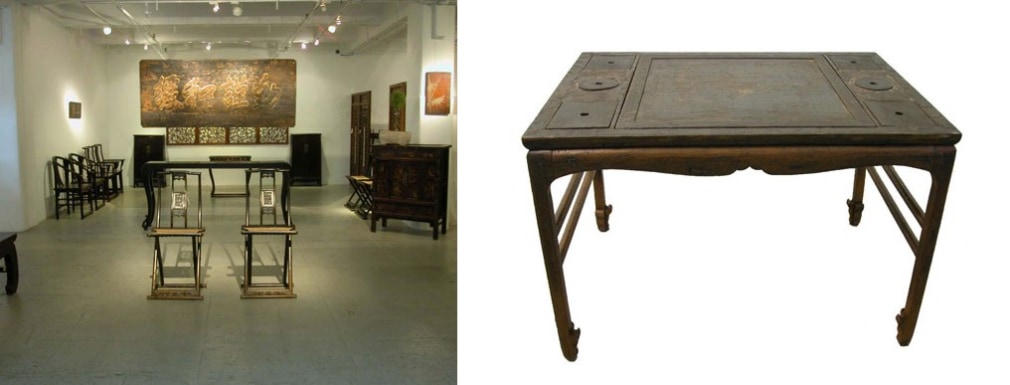Throughout Chinese culture the four seasons have been depicted in art by seasonal changes in the environment or the depiction of certain animals, plants or trees. Deriving from the Chinese philosophical concept of the harmonious balance between yin and yang, the passive female and active male principles of the universe, an appreciation of nature was regarded as crucial to the circulation of qi or energy. Thus a deep connection to nature was considered highly important in the cultivation of the ideal individual.
This exhibition will focus on decorative motifs from nature and the four seasons as used in furniture and scholar’s objects. Using a variety of techniques, these depictions are often used to convey subtle but recognizable meanings. The approach of spring might be depicted by a blossoming orchid whose exquisite characteristics become synonymous with youth, love and beauty, while the emergence of plum blossoms in the intense winter cold is symbolic of endurance in the face of adversity. Bamboo characteristically remains green and upright despite its hollow center throughout the seasons, thus becoming a symbol of longevity, open-mindedness and flexible perseverance. Examples of this can be found in such pieces as a Pair of Southern Official’s Hat Armchairs with the Three Friends of Winter Carving (pine, bamboo, and plum blossoms).
Madeline Fan in the Four Seasons series combines images from her Chinese cultural heritage with contemporary materials and processes to create unique imagery evoking traditional Chinese landscape paintings. Innovatively, she uses materials such as packing tape and vinyl, layered on both sides to create colorfully translucent works. These tape drawings are reminiscent of silhouette cut-outs, with clean, graphic shapes and edges. In other areas layering on vinyl creates a subtle tonal range as these pieces interact with light. Installed as screens or suspended from the ceiling, her work divides space yet does so without creating boundaries. In her own words, “Water in a swimming pool refracts and orders design in its own luminosity, in the same way, tape drawings reveal the surprise and story of an unseen structure or gesture in the physical world.”
自2003年9月10日至10月25日,前波画廊将举办题为《四季》的展览,届时将展出中国明清时期的古典家俱和当代艺术家Madeline Fan的作品。
中语文化艺术中,经常对自然环境的转变及动植物进行描绘,来表现不同季节的特徵及四季的变化。中国的传统哲学讲究阴与阳的和谐统一。气在自然中的流通循环是宇宙中阴阳两极平衡的保证。因此,个人与自然的交流联系是对个性培养的不可或缺的重点。
此次展览的主题是古典家俱及文人小件中对自然及四季的刻画。虽然工艺不同,这些装饰图案都委婉地表达出其比喻意义。比如,兰花可以用来象徵春天,因为兰花的娇柔是青春,爱情和美丽的写照。寒冬中的梅花体现了在艰苦环境中坚强不屈的精神。竹子虽然是空心,却一年四季常青,其枝干挺拔,象徵着坚忍,宽心及长寿。展出的一对南官帽椅的椅背上就刻有“岁寒三友”(即松竹梅)的图案。
Madeline Fan在她的作品《四季》中,将中国传统文化背景与现代材料相结合,创作出与中国传统山水画相媲美的风景作品。使用胶带,乙烯塑料版等材料,她的作品色彩鲜艳,并且平滑透明,线条简明,形状生动,同时又有剪影的特色。在强光下,作品展现出不同的深浅明暗效果。Madeline Fan的作品既可以作为屏风展示,又可以悬挂于天花版上,虽然是空间的一部份,其透明性确不会造成隔阂感。用她自己的话说:“泳池里的水因光的折射而创造出不同的图案。同样的,我的胶带作品反映出自然界中看不到的结构和故事。”


